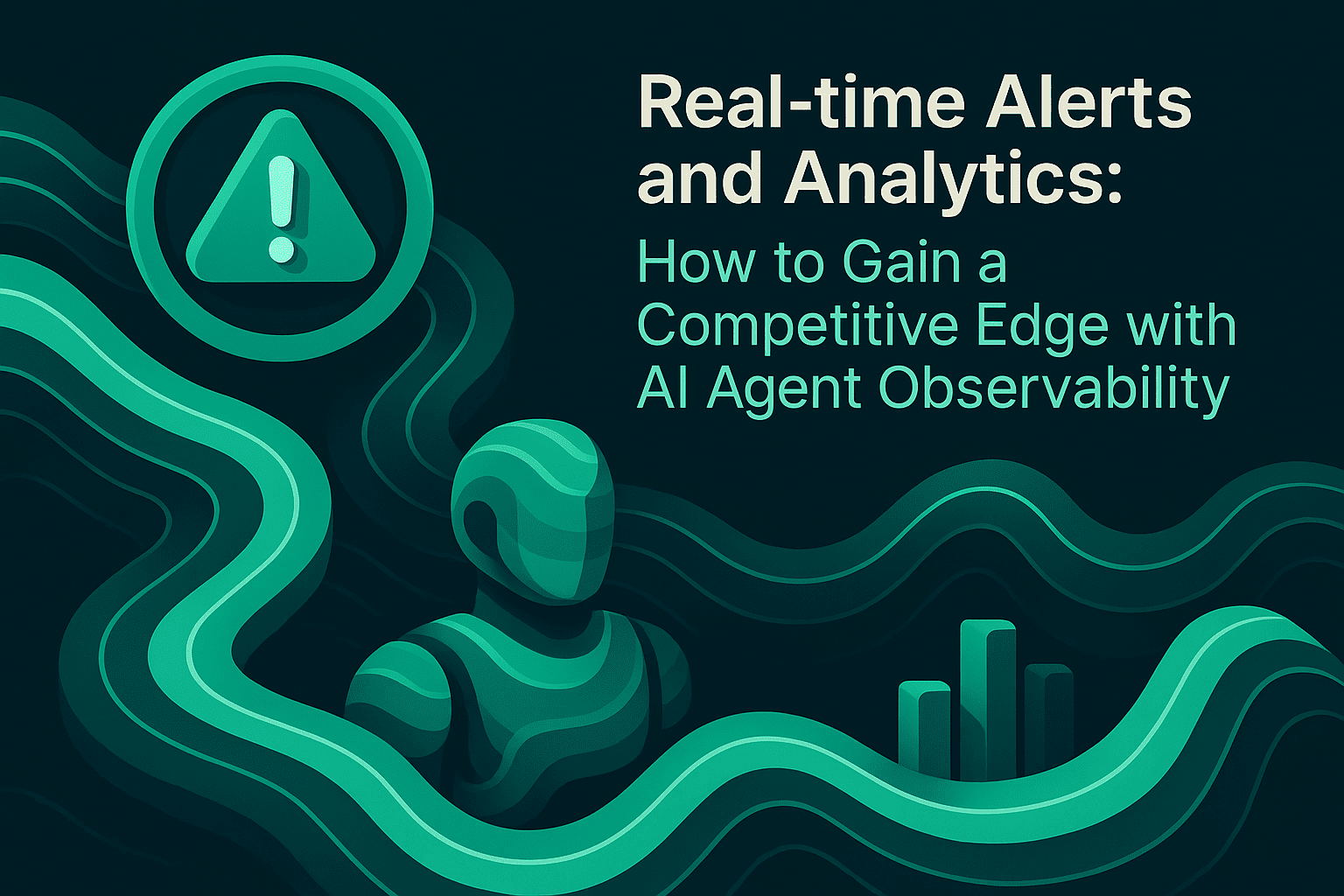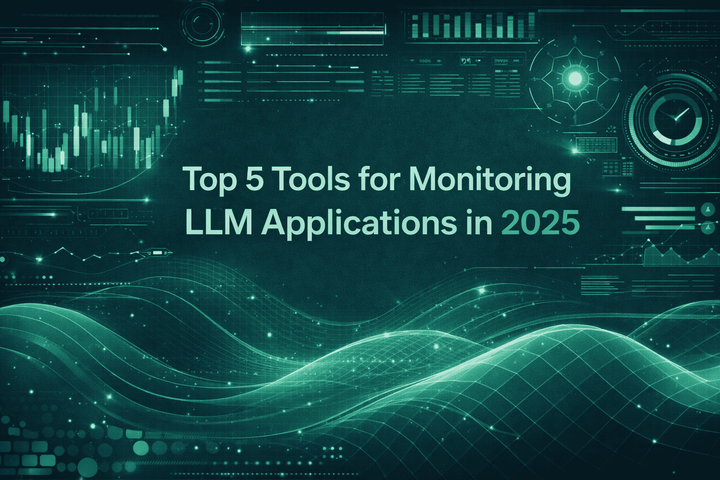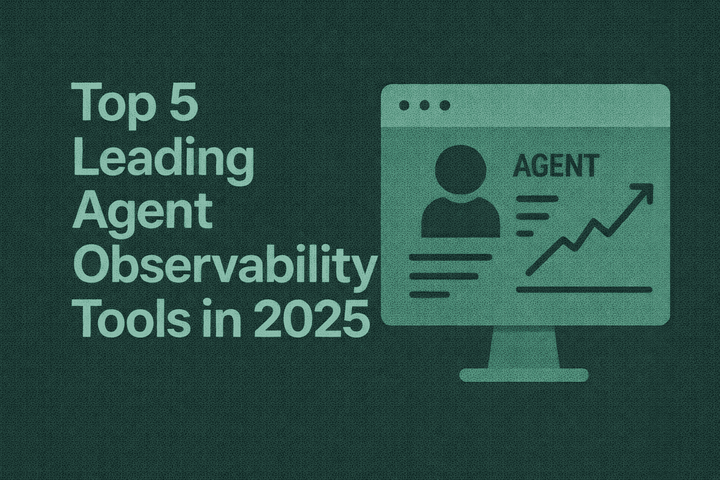Real-time Alerts and Analytics: How to Gain a Competitive Edge with AI Agent Observability

TL;DR
Real-time alerts and analytics are critical for maintaining AI agent reliability in production. Organizations that implement comprehensive AI observability frameworks can detect issues before they impact users, reduce mean time to resolution by up to 70%, and continuously improve agent performance. This article explores how modern observability platforms enable teams to monitor agent behavior through distributed tracing, set up intelligent alerting systems, and leverage analytics to optimize AI application quality. Teams using end-to-end observability solutions achieve faster debugging cycles, better cross-functional collaboration, and measurable improvements in production reliability.
Understanding AI Agent Observability and Its Business Impact
AI agent observability represents a fundamental shift in how organizations monitor and maintain production AI systems. Unlike traditional application monitoring, agent observability requires tracking complex multi-step reasoning processes, LLM interactions, and dynamic decision pathways that span multiple services and data sources.
The business impact of poor observability is substantial. Research from Gartner indicates that organizations without proper AI monitoring capabilities experience 3-5x longer resolution times for production issues. When AI agents fail in customer-facing scenarios, the consequences extend beyond technical metrics to include revenue loss, brand damage, and customer churn.
Agent observability provides visibility into every component of an AI system's execution. Teams can trace individual requests through their entire lifecycle, from initial user input through retrieval operations, model inference, tool calls, and final response generation. This comprehensive view enables faster root cause analysis and proactive issue detection.
Modern observability platforms capture multiple signal types:
- Execution traces that map the complete flow of agent operations
- Performance metrics including latency, token usage, and cost per interaction
- Quality indicators such as hallucination rates, task completion success, and response relevance
- Error patterns that reveal systemic issues before they escalate
Organizations implementing structured observability frameworks report significant operational improvements. According to a study by Databricks, teams with comprehensive AI monitoring reduce their mean time to resolution (MTTR) by 60-70% compared to manual debugging approaches.
The competitive advantage comes from the ability to iterate faster. When engineering teams can quickly identify which component of a multi-agent system is underperforming, they can deploy targeted improvements without disrupting the entire application. This agility is essential in markets where AI capabilities directly differentiate products.
Real-time Alerting Systems for Production AI Applications
Real-time alerting transforms observability data into actionable insights that prevent user-facing failures. The most effective alerting strategies balance sensitivity with specificity, ensuring teams receive notifications about genuine issues without alert fatigue.
Setting Up Intelligent Alert Configurations
Production AI systems require alerting rules that account for their probabilistic nature. Unlike deterministic software, AI agents may exhibit acceptable variance in outputs while still meeting quality thresholds. Alert configurations should reflect this reality through statistically-informed thresholds rather than binary pass-fail criteria.
Maxim's alert and notification system enables teams to configure multi-dimensional triggers based on:
- Quality score degradation when automated evaluations detect declining performance across metrics like faithfulness, relevance, or task completion
- Anomaly detection for sudden changes in latency, error rates, or cost patterns that deviate from historical baselines
- Threshold violations when specific metrics breach acceptable ranges, such as excessive hallucination rates or failed tool calls
- Evaluation failures triggered by custom business logic or compliance requirements
The platform supports flexible notification routing through Slack integrations and PagerDuty connections, enabling teams to align alert escalation with their incident response workflows.
Multi-Level Monitoring for Complex Agent Systems
Multi-agent systems require hierarchical monitoring that captures issues at different granularities. Teams must track:
- Session-level metrics that evaluate entire user conversations and long-running interactions
- Trace-level indicators showing individual request flows through the agent architecture
- Span-level details revealing performance characteristics of specific components like retrieval steps or model calls
This layered approach enables precise debugging. When an alert fires for degraded session quality, engineers can drill down through traces to identify which specific span introduced the problem. Distributed tracing makes this investigation efficient by preserving the complete execution context.
Proactive Issue Detection Through Pattern Recognition
Subtle changes in model output characteristics could signal prompt drift or training data quality problems that require attention.
Teams leveraging continuous evaluation workflows can catch these issues early. By running automated quality checks on production logs, organizations maintain consistent performance standards without manual sampling.
Analytics Dashboards and Performance Metrics That Drive Decisions
Analytics capabilities transform raw observability data into strategic insights that inform product development and resource allocation. Effective analytics dashboards balance technical depth with executive-level clarity, enabling different stakeholders to extract relevant insights.
Core Metrics for AI Agent Performance
Production AI applications require specialized metrics that capture both technical performance and business outcomes. Key performance indicators include:
- Quality metrics such as faithfulness scores, context relevance, and task success rates that quantify output quality
- Operational metrics including latency percentiles, error rates, and system availability
- Cost metrics tracking token consumption, model API expenses, and infrastructure spending per interaction
- User engagement indicators such as conversation length, retry rates, and satisfaction scores
Maxim's dashboard and reporting capabilities enable teams to visualize these metrics across custom dimensions. Organizations can segment performance by user cohort, feature flag, model version, or any business-relevant attribute.
Custom Dashboards for Cross-Functional Collaboration
Different stakeholders need different views of the same underlying data. Engineering teams focus on technical debugging metrics, product managers track user experience indicators, and executives monitor business impact.
Custom dashboard functionality enables each team to configure relevant visualizations without requiring data engineering support. Product managers can track feature adoption and quality trends. SREs can monitor system health and resource utilization. Business leaders can correlate AI performance with revenue metrics.
This flexibility accelerates decision-making by putting insights directly in the hands of the people who need them. When product teams identify a quality regression through dashboard analytics, they can immediately collaborate with engineering to investigate root causes using the same platform's tracing capabilities.
Comparative Analysis for A/B Testing and Experimentation
Continuous improvement requires rigorous comparison between different agent configurations. Analytics platforms enable side-by-side evaluation of:
- Prompt variations tested through experimentation workflows
- Model comparisons evaluating different LLM providers or versions
- Architecture changes assessing the impact of new retrieval strategies or tool integrations
Statistical rigor is essential for these comparisons. Platforms should support appropriate significance testing to distinguish genuine improvements from random variance. The best systems integrate experimentation into the development lifecycle, making it easy to run controlled tests before full deployment.
Long-term Trend Analysis and Capacity Planning
Historical analytics reveal patterns that inform strategic planning. Organizations can identify:
- Seasonal usage patterns that guide infrastructure scaling decisions
- Quality drift over time indicating when retraining or prompt optimization is needed
- Cost trajectory analysis showing how expenses scale with user growth
Data export capabilities enable integration with business intelligence tools for deeper analysis. Teams can combine observability data with other business metrics to understand the full impact of AI quality on customer outcomes.
Implementing Observability-Driven Development Workflows
Organizations that embed observability into their development process achieve faster iteration cycles and higher production quality. Observability-driven development treats monitoring as a first-class concern, not an afterthought.
Pre-Production Testing with Simulations
Before deploying to production, teams should validate agent behavior through comprehensive simulation workflows. Simulations test agents against diverse scenarios and user personas, identifying edge cases that manual testing might miss.
Text-based simulations enable rapid iteration by automatically generating test conversations that exercise different agent capabilities. Teams can evaluate:
- Conversational coherence across multi-turn interactions
- Task completion success for goal-oriented agents
- Error recovery when the agent encounters unexpected inputs
For voice-enabled applications, voice simulation capabilities test acoustic model performance and transcription accuracy under varied conditions.
Continuous Evaluation in Production
Production deployments require ongoing quality assessment. Automated evaluation workflows run quality checks on sampled production traffic, ensuring agents maintain expected performance levels.
Organizations can configure evaluation suites that combine:
- Pre-built evaluators from Maxim's evaluator library covering common quality dimensions
- Custom evaluators tailored to specific business requirements and domain constraints
- Human-in-the-loop reviews for nuanced assessments that require domain expertise
This multi-layered approach balances automation efficiency with the judgment required for complex scenarios. Teams can set up human annotation workflows to review edge cases flagged by automated systems.
Dataset Curation from Production Insights
Production observability generates valuable training data. Organizations should systematically curate production logs into evaluation datasets that capture real-world usage patterns.
Maxim's data management capabilities enable teams to:
- Filter and sample production logs based on quality scores or business criteria
- Enrich examples with human annotations and ground truth labels
- Version datasets for reproducible evaluation across development cycles
- Create data splits for targeted testing of specific capabilities or user segments
This creates a virtuous cycle where production insights inform evaluation strategies, which in turn improve agent quality. Organizations can import and manage datasets centrally, ensuring consistency across experimentation and evaluation workflows.
Integration with Development Tools and CI/CD Pipelines
Observability should integrate seamlessly with existing development infrastructure. Modern platforms provide:
- SDK support in multiple languages for easy instrumentation
- OpenTelemetry compatibility for standardized trace export
- CI/CD integration enabling automated quality gates before deployment
- Version control for prompts and configurations
Teams can integrate evaluation into CI/CD pipelines, preventing regressions from reaching production. Automated quality checks run on every pull request, ensuring code changes don't degrade agent performance.
Conclusion
Real-time alerts and analytics represent essential capabilities for organizations deploying production AI agents. The competitive advantages are clear: faster debugging, proactive issue detection, data-driven optimization, and measurable quality improvements.
Effective observability requires more than logging. It demands comprehensive instrumentation, intelligent alerting, actionable analytics, and integration with development workflows. Organizations that treat observability as a strategic investment rather than operational overhead achieve superior reliability and faster innovation cycles.
The technical landscape continues to evolve. As AI agents become more complex and autonomous, observability requirements will expand. Teams that establish robust monitoring foundations now will be positioned to scale their AI capabilities reliably.
Maxim AI provides end-to-end observability, evaluation, and simulation capabilities designed specifically for production AI applications. Teams can implement comprehensive monitoring with minimal instrumentation overhead while gaining the flexibility to customize dashboards, alerts, and evaluation strategies for their specific requirements.
Ready to implement production-grade observability for your AI agents? Schedule a demo to see how Maxim's platform can help your team ship reliable AI applications faster, or sign up to start monitoring your agents today.


